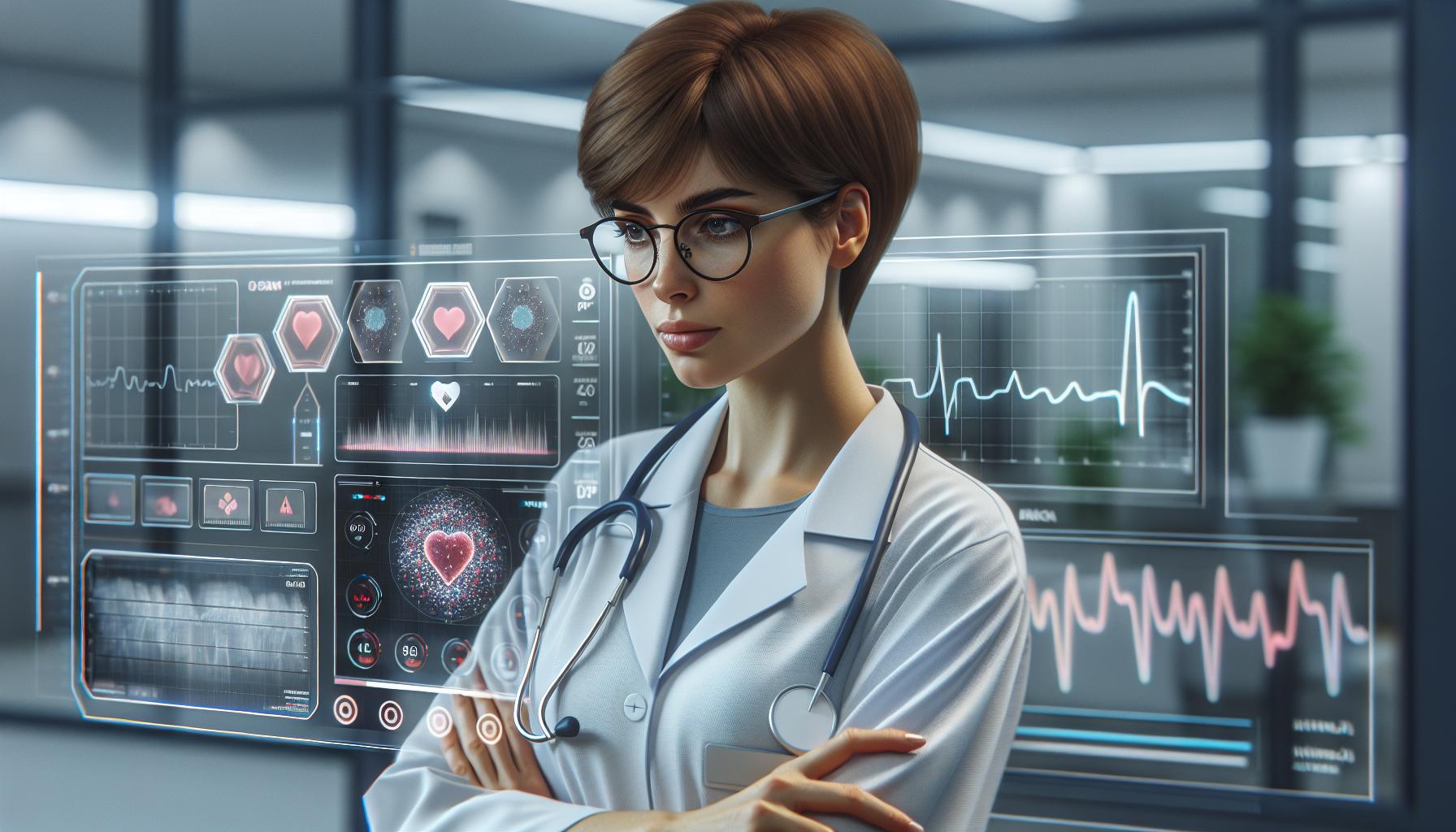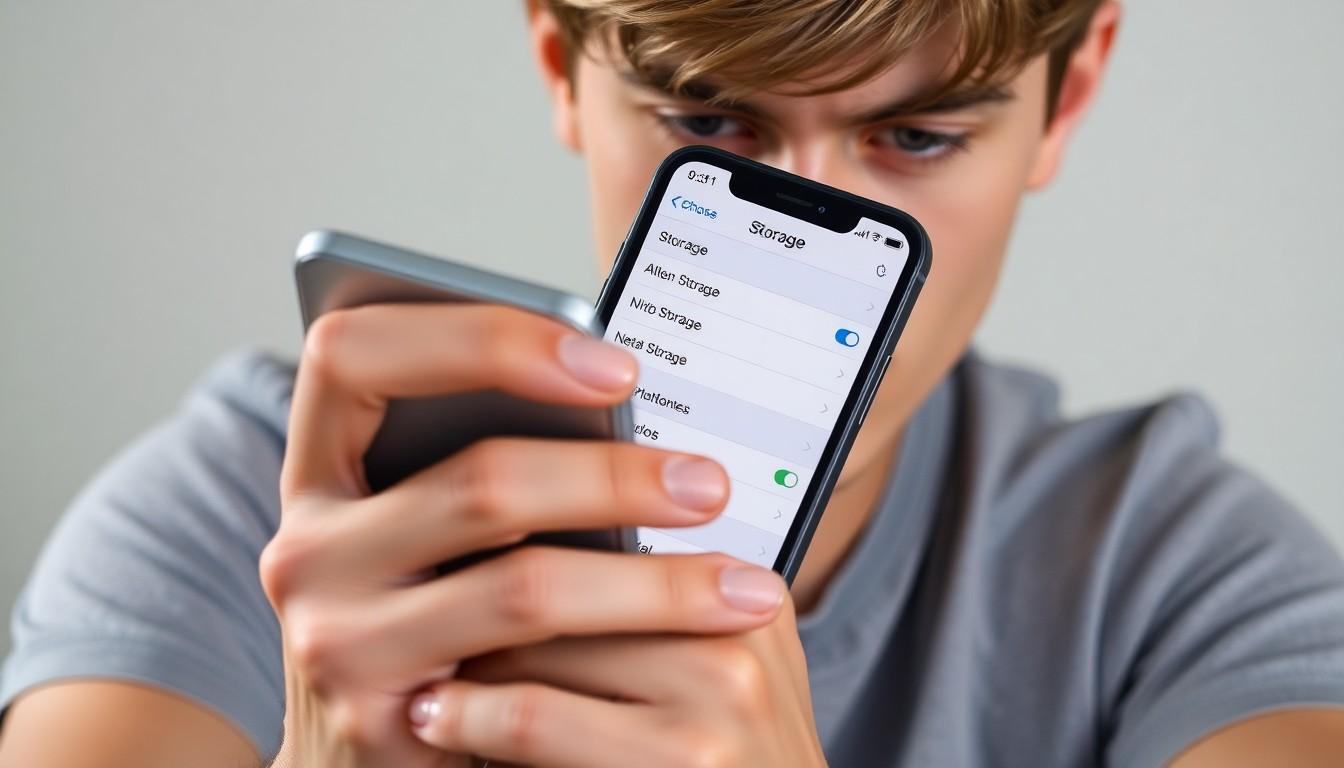In today’s fast-paced world, keeping tabs on patient health is like trying to catch a greased pig at a county fair—challenging but crucial. Luckily, technology’s got our backs with an array of sensors that act like vigilant watchdogs, alerting physicians when something’s amiss. These little gadgets don’t just sit there looking pretty; they’re the unsung heroes of modern medicine, ready to sound the alarm when a patient needs attention.
Table of Contents
ToggleOverview of Patient Health Monitoring
Patient health monitoring systems utilize various sensors to track vital health metrics. These sensors provide real-time data, crucial for detecting early signs of health deterioration. Wearable devices, equipped with heart rate monitors, can alert physicians if a patient experiences abnormal heart patterns. Furthermore, glucose sensors continuously monitor blood sugar levels in diabetic patients, sending alerts if levels exceed or drop below thresholds.
Temperature sensors play an essential role in detecting fevers or infections, which can prompt immediate medical evaluation. Additionally, activity monitors track a patient’s mobility and can indicate potential issues related to recovery or medication side effects. Remote monitoring tools help in keeping healthcare professionals informed about their patient’s conditions even when they are not present.
Integration of these sensors into healthcare frameworks enhances patient safety significantly. It allows for quicker response times to potential health crises, reducing complications. Physicians rely on the aggregated data from multiple sensors to make informed decisions about treatment plans. As technology advances, the capabilities of these monitoring systems will likely improve, fostering a more proactive approach to health management.
Emphasis on sensor technology in patient monitoring underscores its importance in modern healthcare. These devices contribute to a comprehensive understanding of health trends, aiming to enhance patient outcomes. Continuous data collection enables tailored healthcare interventions, ultimately promoting better health management and patient well-being.
Importance of Security Alerts in Healthcare

Security alerts play a crucial role in enhancing patient safety and improving healthcare outcomes. These alerts serve as notifications that inform physicians of any abnormal health metrics, enabling timely intervention.
Role of Physicians in Patient Monitoring
Physicians act as key figures in managing patient health. They rely on sensor data to identify potential health issues quickly. Utilizing information from wearables and monitoring systems, physicians can tailor treatment plans effectively. Early detection through these alerts allows for proactive decision-making. Health insights guide physicians in adjusting medications or suggesting lifestyle changes. This integration of sensor technology ensures that physicians stay informed and engaged in their patients’ health management.
Benefits of Timely Alerts
Timely alerts provide several essential benefits in healthcare. Real-time notifications facilitate rapid responses to critical situations. Immediate awareness of changes in a patient’s condition leads to quicker interventions. Physicians can prevent complications by addressing issues promptly. Continuous monitoring increases overall patient safety, significantly reducing the risk of severe health events. Effective alerts contribute to improved patient outcomes by enabling more accurate diagnoses and treatment plans. This system ultimately promotes a higher quality of care within the healthcare framework.
Types of Sensors for Patient Health

Various sensor types play critical roles in monitoring patient health and generating security alerts. These technologies actively assist healthcare providers in managing patient conditions effectively.
Wearable Sensors
Wearable sensors have gained traction in healthcare for their ability to continuously monitor vital signs. Devices such as heart rate monitors and glucose sensors provide real-time data, allowing physicians to detect abnormalities quickly. The portability of these devices encourages patient compliance, as they can be worn comfortably throughout daily activities. Alerts generated by these sensors can indicate concerning trends, prompting immediate medical intervention if necessary.
Environmental Sensors
Environmental sensors contribute significantly to patient health by analyzing factors within the patient’s surroundings. Temperature sensors can identify sudden spikes indicating fever or infection. Humidity and air quality sensors play essential roles in monitoring conditions that can affect respiratory health. Notifications triggered by these sensors enable timely adjustments to patient care, ensuring a safer environment for recovery or treatment.
Remote Monitoring Devices
Remote monitoring devices extend the capabilities of traditional healthcare by enabling off-site tracking. These devices gather a wide range of health metrics, including blood pressure and oxygen saturation levels. Data collected is transmitted to healthcare professionals in real-time, facilitating prompt responses to any concerning changes. Alerts generated by remote monitoring systems ensure patients receive immediate attention, especially in critical situations.
Which of the Following Sensors Help Generate Security Alerts to Physicians Regarding Patient Health?
Numerous sensors play a vital role in generating security alerts, enhancing patient monitoring systems. These devices enable real-time data collection, leading to timely interventions by healthcare providers.
Sensor Technologies Overview
Wearable sensors, environmental sensors, and remote monitoring devices each contribute to patient health management. Wearable sensors continuously track metrics, such as heart rate and glucose levels. Environmental sensors assess the conditions of recovery spaces by evaluating temperatures and air quality. Remote monitoring devices facilitate tracking outside traditional healthcare settings, providing critical data that alerts physicians to any concerning changes.
Examples of Effective Sensors
Heart rate monitors serve an essential purpose by detecting irregularities in pulse patterns, instantly notifying healthcare professionals. Glucose sensors help manage diabetes through continuous monitoring, providing insights that prevent critical events. Temperature sensors alert providers about fever, a possible sign of infection. Additionally, activity monitors inform doctors about patient mobility, indicative of recovery status or medication effects. These examples showcase how various sensors work together to improve patient safety and outcomes.
Challenges and Considerations
Monitoring patient health through sensors presents several challenges that warrant careful consideration. Addressing these issues ensures effective implementation and use of technology in healthcare.
Data Privacy and Security
Data privacy stands as a major concern in patient health monitoring. Sensitive health information generated by sensors requires strict protection measures. Unauthorized access to this data might compromise patient confidentiality, increasing the urgency to enforce robust security protocols. Compliance with regulations like HIPAA ensures that healthcare providers safeguard patient information, fostering trust. Regular security assessments and software updates further reduce vulnerabilities, enhancing overall data protection. Implementing encryption methods for data storage and transmission also adds an essential layer of security, protecting patient health records from potential breaches.
Integration with Existing Systems
Integrating new sensor technologies into existing healthcare systems proves essential for effective data utilization. Smooth adaptation to electronic health records (EHR) systems ensures that sensor data flows seamlessly into healthcare providers’ daily operations. Compatibility issues can lead to disruptions in monitoring functions, so selecting sensors designed for easy integration is critical. Training healthcare personnel on utilizing new sensor technologies optimizes their effectiveness and ensures staff confidence. Standardizing data formats helps facilitate smooth data exchanges, ultimately supporting a more cohesive patient care approach. Enhancing workflow efficiency through effective integration can significantly improve patient outcomes and response times.
Conclusion
The integration of various sensors into healthcare systems is revolutionizing patient monitoring. These technologies not only provide real-time data but also generate crucial security alerts that empower physicians to act swiftly. By utilizing wearable sensors, environmental monitors, and remote tracking devices, healthcare providers can quickly identify and address potential health issues.
This proactive approach enhances patient safety and optimizes treatment plans, ultimately leading to better health outcomes. As technology continues to evolve, the importance of these sensors in modern medicine will only grow, making them indispensable tools in the quest for improved patient care.



